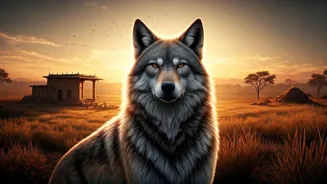From the streets of Mumbai to the villages of Tamil Nadu, dogs are a part of our lives. Let's uncover the secrets of their domestication and breeding -
a story as old as Indian civilization itself.
Wolf to Woof
The story of dogs begins thousands of years ago with the grey wolf. Humans and wolves, drawn by mutual benefit, began a slow dance. Over time, these interactions led to selective breeding, the cornerstone of domestication. This process fundamentally altered the wolf's genetics and behavior over generations.
Selective Breeding Unveiled
The key to dog breeding is selective breeding. Early humans picked wolves with desired traits like friendliness or a good sense of smell. These wolves were then bred, passing on their traits to their offspring. This process, repeated across generations, resulted in new breeds with specific abilities and appearances, just like the vibrant tapestry of cultures across India.
Traits that Evolved
Domestication altered several key traits. Wolves gradually became smaller, with friendlier temperaments. Their skull shape also changed, along with their coat colors. These physical and behavioral shifts, fueled by human selection, reflect a profound evolutionary journey. Think of the many diverse languages across India; each breed carries its unique lineage.
Breeds and Their Roles
Dogs' abilities and roles exploded. From guarding livestock to aiding in the hunt, humans found uses for their canine companions. This led to more specialized breeding. Different breeds excelled in various tasks. For example, some were adept at guarding, while others had excellent sniffing skills, just like the varied skills found across the states in India.
The Dog's Future
The domestication of dogs remains a vibrant topic of study. Genetics, behavior, and their role in society are constantly being explored. Understanding this journey, rooted in history and culture, helps us better appreciate our canine friends and their important place in our lives. Consider it a lesson from the rich Indian tapestry.










